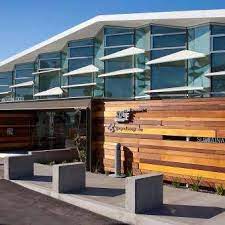 Project Title
Project Title
Demand Response Control on Integrated Space Conditioning System
Project Number DR18SDGE0002 Organization SDG&E End-use HVAC Sector Commercial Project Year(s) 2018 - 2023Demand Response Control on Integrated Space Conditioning System
Field Test Results of Integrated Variable Refrigerant Flow and Indirect Evaporative Cooling System
As an activity adjunct to the California Energy Commission (CEC) project “Climate Appropriate Innovations for Variable Refrigerant Flow Systems: Integrated Indirect Evaporative Cooling Adaptive Controls and Advanced Refrigerants” (CEC-500-2021-028)1, EPRI tested the demand response capability of a customized controller regulating a hybrid space conditioning system comprising a variable refrigerant flow (VRF) unit and indirect evaporative cooling (IEC) units. With sponsorship from San Diego Gas & Electric (SDG&E), the tests were conducted at SDG&E’s Energy Innovation Center (EIC), one of three demonstration sites for the CEC project.
This underlying CEC project demonstrated the application of a hybrid space conditioning system that integrates VRF with IEC as a more energy-efficient alternative to rooftop units (RTUs) prevalent in small- to medium- commercial buildings throughout California. While VRF has been demonstrated as an energy-efficient space conditioning technology, one of its inherent challenges is limited ventilation capacity. This hybrid configuration utilizes IEC as a dedicated outside air system (DOAS) to satisfy ventilation requirements, eliminate outside air loads during cooling, and reduce heating loads as an air-air heat exchanger.
Field demonstrations at three sites – a multi-purpose office building in Northern California, a quick-serve restaurant in Southern California, and a multi-purpose office building in San Diego (SDG&E territory) – sought to validate energy savings relative to modeled baseline performance, as well as peak load reduction, demand responsiveness, and occupant comfort.
A key advancement of this project was the development of an integrated system controller that optimizes operation of the combined ‘VRF + IEC’ configuration through zonal occupancy sensing and learned building behavior. Control sequence algorithms were based on governing logic informed by adaptive capabilities and response to inputs such as ambient weather conditions, humidity control, occupancy, and occupant comfort preferences.
Supplemental funding by SDG&E supported testing of the demand response functionality of the integrated system controller at the SDG&E Energy Innovation Center (EIC) in San Diego. That is the subject of this report.
